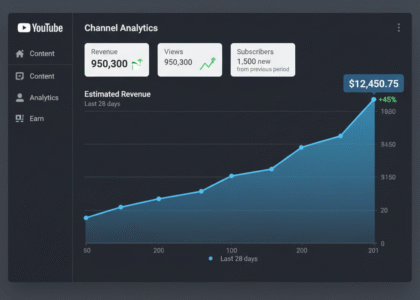Introduction: Hedge Fund Risk Management
Hedge funds offer high-reward opportunities, but they also come with significant risks. Effective hedge fund risk management is essential to protect investments from market volatility, economic downturns, and operational failures. Investors need a solid understanding of risk mitigation strategies to maximize returns while safeguarding their capital. In this guide, we’ll explore key risk management techniques used by hedge funds and how investors can apply these strategies for smarter financial decisions.
Understanding Hedge Fund Risks
Before diving into risk management strategies, it’s important to recognize the types of risks hedge funds face:
- Market Risk: The potential for losses due to market fluctuations.
- Liquidity Risk: The difficulty of selling assets quickly without affecting their price.
- Leverage Risk: The amplified exposure to losses due to borrowed capital.
- Operational Risk: Risks from internal failures such as fraud, mismanagement, or technical issues.
- Regulatory Risk: Changing laws and regulations that impact hedge fund operations.
Key Hedge Fund Risk Management Strategies

1. Diversification
Diversification spreads risk across different asset classes, sectors, and geographic regions, reducing the impact of losses from a single investment.
- Asset Allocation: Investing in a mix of equities, bonds, commodities, and alternative assets.
- Geographical Diversification: Reducing exposure to country-specific economic downturns.
- Industry Diversification: Balancing investments across various sectors to mitigate industry-specific risks.
2. Hedging with Derivatives: Hedge Fund Risk Management

Hedge funds use derivatives such as options, futures, and swaps to protect against market downturns.
- Options Trading: Buying put options to hedge against falling stock prices.
- Futures Contracts: Locking in prices for assets to reduce price volatility risk.
- Swaps: Entering into agreements to exchange cash flows and mitigate risk exposure.
3. Using Stop-Loss Orders
A stop-loss order is an automatic sell order placed at a predetermined price, limiting potential losses in case of market downturns.
- Hard Stop-Loss: A fixed price level where assets are sold immediately.
- Trailing Stop-Loss: Adjusts dynamically with market price movements to secure profits while limiting downside risk.
4. Stress Testing and Scenario Analysis
Hedge funds use stress testing to evaluate how different market conditions affect portfolio performance.
- Historical Simulations: Analyzing past market crashes to predict future risks.
- Hypothetical Scenarios: Modeling potential economic crises to assess preparedness.
5. Risk Monitoring and Compliance

Continuous monitoring helps hedge funds detect risk early and take corrective action.
- Risk Metrics: Tracking key indicators like Value at Risk (VaR) and Sharpe ratios.
- Regulatory Compliance: Ensuring adherence to financial regulations to avoid legal penalties.
Common Mistakes in Hedge Fund Risk Management
- Overleveraging: Using excessive borrowed capital increases exposure to market downturns.
- Ignoring Liquidity Risk: Investing in illiquid assets may lead to difficulties in exiting positions.
- Lack of Diversification: Concentrated portfolios are more vulnerable to individual asset failures.
- Underestimating Economic Shifts: Global events, inflation, and interest rate changes can significantly impact investments.
FAQs
1. What is the most significant risk in hedge fund investing?
Market risk is one of the biggest concerns, as it directly affects the value of investments due to market fluctuations.
2. How do hedge funds protect against losses?
Hedge funds use strategies like diversification, derivatives, stop-loss orders, and stress testing to manage risks effectively.
3. Can individual investors apply hedge fund risk management strategies?
Yes, investors can use techniques like diversification, stop-loss orders, and portfolio rebalancing to protect their investments.
4. What role does regulation play in hedge fund risk management?
Regulatory compliance helps hedge funds operate within legal frameworks, reducing risks related to fraud and financial instability.
5. Is hedge fund investing suitable for risk-averse individuals?
Hedge funds are generally high-risk investments, making them more suitable for experienced investors with a higher risk tolerance.
Conclusion
Effective hedge fund risk management is essential for safeguarding investments against market volatility, leverage risks, and operational failures. By diversifying portfolios, using derivatives, setting stop-loss orders, and conducting stress tests, investors can reduce risks and optimize returns. Whether you’re an institutional investor or an individual looking to enhance your financial strategies, applying these risk management techniques can help you navigate the complexities of hedge fund investing.
Want more insights on smart investing? Visit GetCashVibe for expert financial tips!






